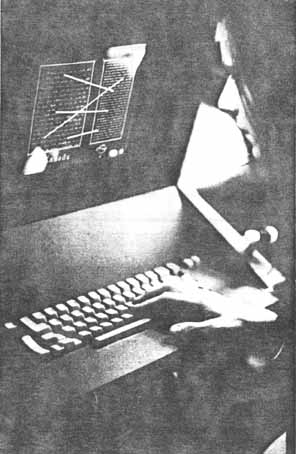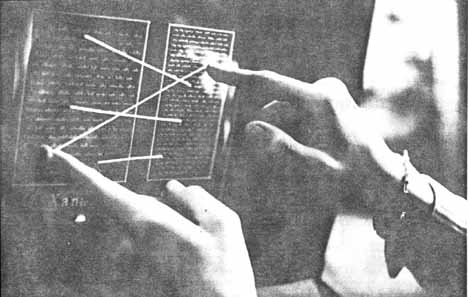PARALLEL VISUALIZATION: Transpointing Windows*
Here is the fundamental problem of hypertext: being able to see connections side by side. This is true whether you are looking at separate pages, different versions of the same document, commentaries on one document by another, or any other parallel document structure.
Here is the design I proposed in 1972 for a parallel visualizing editor.
(This was long before the term "word processing" was invented, or the brain-dead
function it denotes.) Current one-way hypertext, like the Web (and
its predecessor HyperCard) lack this basic form of operation, which I consider
to be the most fundamental tool of human thought. 
(Note that the photograph is a simulation: there were practically no
office computers with screens in 1972; this is a cardboard model on top
of a typewriter, with a celluloid picture to look like a screen.
A nice friend of mine named Pat is the model.)

We now have a demo of this functionality, but unfortunately do not yet have permission from the vendor of the base software to distribute it to the public.
Note that this design was published in 1972, about two years before
the unfortunate design of today's computer-screen windows was promoted
out of Xerox PARC. (If I have any of these details wrong, I invite
correction.)